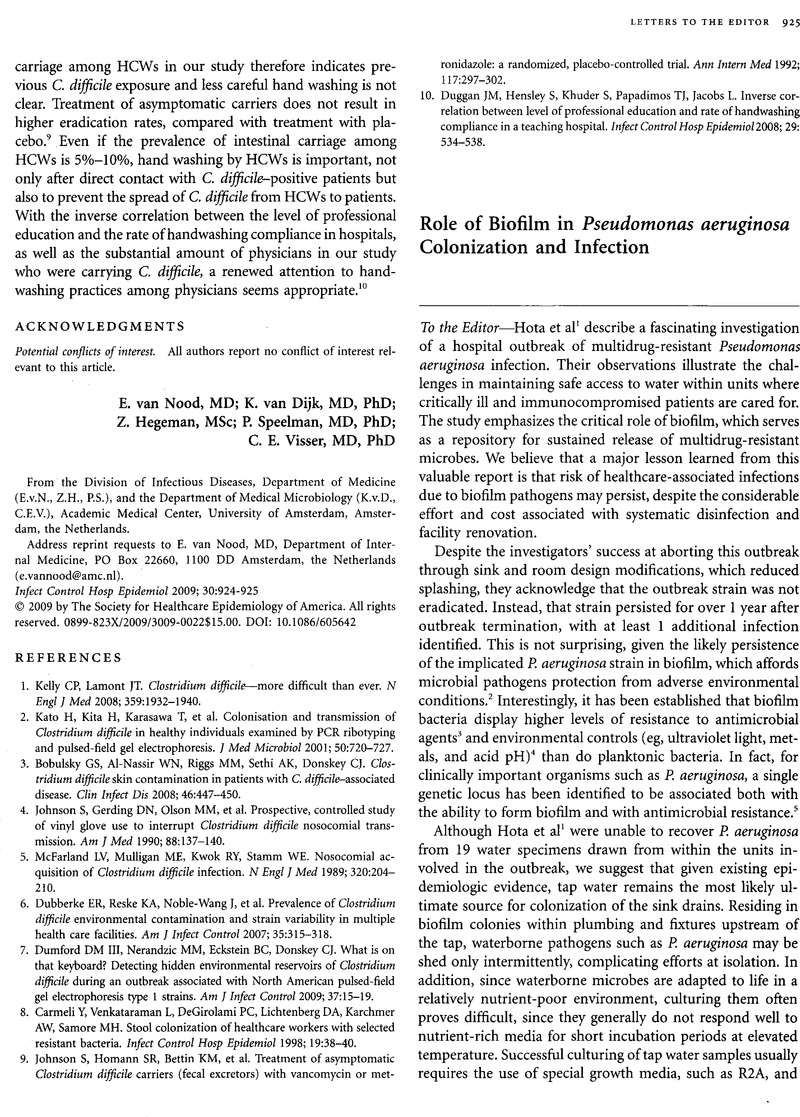Crossref Citations
This article has been cited by the following publications. This list is generated based on data provided by Crossref.
Curran, Evonne T
2012.
Outbreak column 3: outbreaks of Pseudomonas spp from hospital water.
Journal of Infection Prevention,
Vol. 13,
Issue. 4,
p.
125.
Niemirowicz, Katarzyna
Surel, Urszula
Wilczewska, Agnieszka Z
Mystkowska, Joanna
Piktel, Ewelina
Gu, Xiaobo
Namiot, Zbigniew
Kułakowska, Alina
Savage, Paul B
and
Bucki, Robert
2015.
Bactericidal activity and biocompatibility of ceragenin-coated magnetic nanoparticles.
Journal of Nanobiotechnology,
Vol. 13,
Issue. 1,
Abdouchakour, F.
Aujoulat, F.
Licznar-Fajardo, P.
Marchandin, H.
Toubiana, M.
Parer, S.
Lotthé, A.
and
Jumas-Bilak, E.
2018.
Intraclonal variations of resistance and phenotype in Pseudomonas aeruginosa epidemic high-risk clone ST308: A key to success within a hospital?.
International Journal of Medical Microbiology,
Vol. 308,
Issue. 2,
p.
279.
Markiewicz, Karolina H.
Misztalewska-Turkowicz, Iwona
Niemirowicz, Katarzyna
Bucki, Robert
Majcher, Anna M.
and
Wilczewska, Agnieszka Z.
2019.
Carbamohydrazonothioate-based polymer-magnetic nanohybrids: Fabrication, characterization and bactericidal properties.
Arabian Journal of Chemistry,
Vol. 12,
Issue. 8,
p.
5187.
Kalema, Jocelyne
Heroes, Anne-Sophie
Kahindo, Immaculée
Hyland, Peter
Muzinga, Jacques
Lunguya, Octavie
and
Jacobs, Jan
2024.
Bacterial contamination of mobile handwashing stations in hospital settings in the Democratic Republic of the Congo.
Antimicrobial Resistance & Infection Control,
Vol. 13,
Issue. 1,



